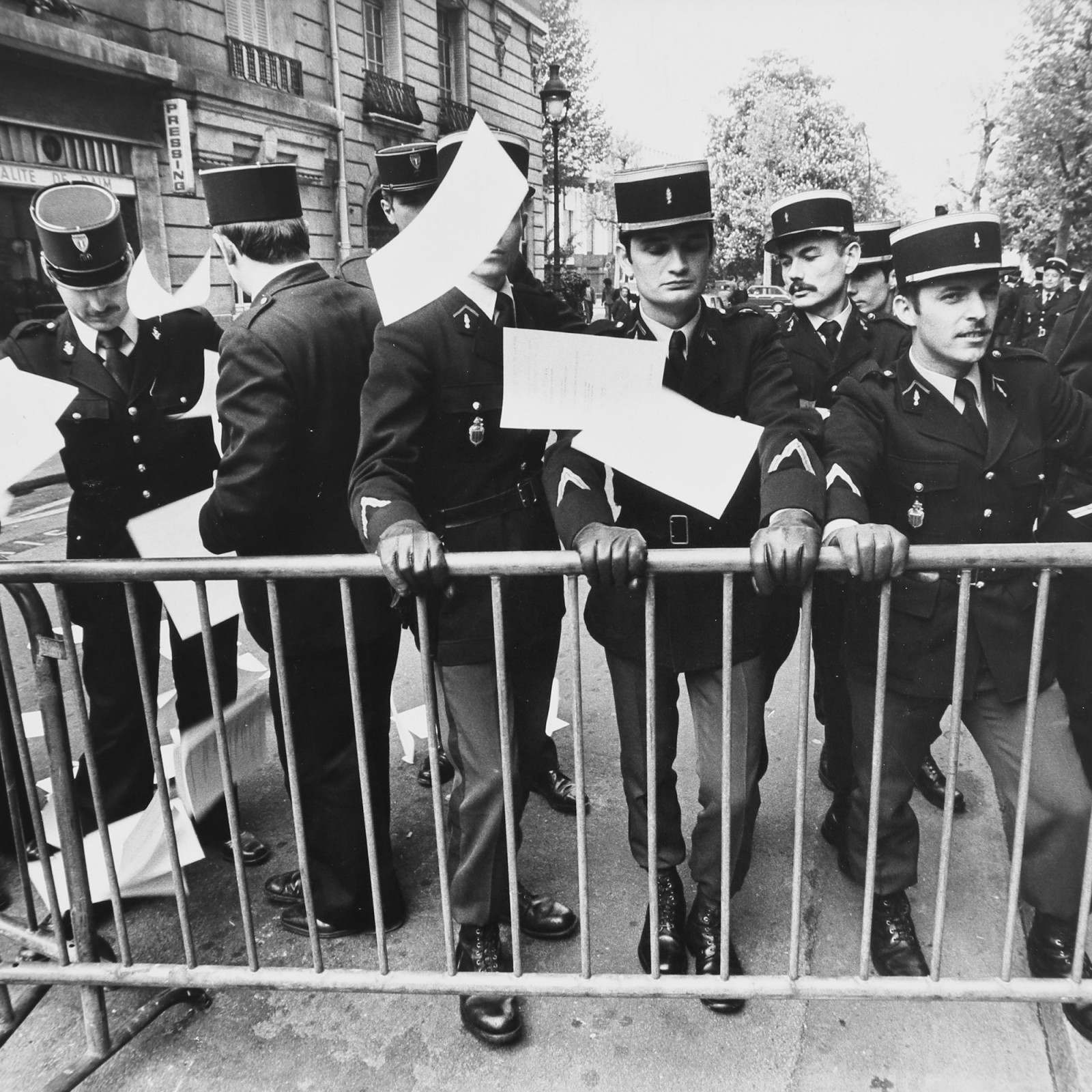
In 1977, Krzysztof Pruszkowski, a Polish-born photographer residing in France today, was not yet a legal resident. As a man without a country, he began a project that bore the stark, Polish title Barierka (Barrier). Over several months, he produced a few hundred black-and-white photographs depicting the streets of Paris, cut off at various angles by the metal blockades residents have come to know so well. The barrier design patented by Boris Peskine has been in mass production since the mid-1950s. In Pruszkowski’s photographs, this characteristic object, seemingly anonymous and relatively neutral, leading the way, as it were. Then again, we can see it divide and block the way in another direction, until it ultimately becomes the focal point of street battles and an unwelcome symbol of the power of policing. In 1978 Barierka was published as a collection of photographs and shown as an exhibition at the Centre Pompidou in Paris. It was later added to its permanent collection. Between 1978-1986, the show of 78 photographs (each 24×30 cm) mounted on plywood panels travelled across Poland for 10 solo shows, taking on an entirely new political context. The original set of photographs, some of which carry the traces of the public’s aggression of 40 years ago, returns to Warsaw for a solo show at Raster, along with the album. It figures as one of the most remarkable projects in the history of post-war photography, while maintaining its status as a work of art of enduring relevance and astonishing vitality.
As the artist wrote of the project in 1978:
Why take a photograph of it? Because it is what it is, like the mount of Mallory, lying in plain view. An obsessive presence, like a screen out of grey steel hung up above the cityscape. A great wall of bars, long and interconnected from end to end, as if to cut France in half, which no one even seems to notice anymore. When you’ve gone through each subsequent stage of habituation and desensitization, achieved in the same way as through a well-executed propaganda campaign, a passive and unconscientious acceptance of this very barrier sets in. It is a barrier without meaning, neutral, even familiar.
An object of fascination and revulsion. One or the other. Two sides of the same coin, depending on the side you’re on.
It’s the physical manifestation of the dream of highly industrialized society because it’s a complete and perfect object. The manifestation of all the conditions of productivity formulated by Bahaus from afar, in other words: functionalism, polyvalence, elasticity, multifunctionality. From this perspective, it’s a perfect work. Produced in unlimited quantities, purchased with funds drawn from bottomless public coffers, delivered for free by the State in numbers are in excess of real demand, containing a grain of society’s post-industrial decadence in its polluting nature.
The argument that it’s easily transportable and adjustable, set up only on a temporary basis, is undermined by its presence en masse. It’s set up as a product of habit, even when there’s no reason for it to be there. (…)
The exhibition of photographs and album reveal a series of images as in a silent film, with only one hero – barierka in the title role. When you look at a barrier, you don’t see a good or bad side – you either have barriers, or you don’t.







